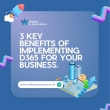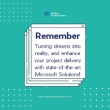Every workplace demands adaptability and foresight, especially in the strategic planning of workforce needs. In a world where business integration and intelligent forecasting shape the paths to success, “strategic workforce planning” is not just a buzzword but a crucial methodology.
This concept is the backbone of ensuring that an organisation can not only survive but thrive by aligning its human resources with its future business objectives.
Strategic Workforce Planning Process

Strategic workforce planning involves a systematic approach to identifying the current and future workforce requirements necessary to achieve business goals.
1. Understand Strategic Objectives
Begin by clarifying the organisation’s long-term strategic goals. Determine how the workforce can best contribute to these goals.
2. Analyse the Current Workforce
Assess the skills, experience, and distribution of the current employees. Identify strengths and areas where the current workforce meets or falls short of business needs.
3. Forecast Future Workforce Requirements
Use business growth projections and market analysis to predict future workforce needs. Consider factors like technological advancements, market expansion, or shifts in industry demands.
4 Identify Gaps
Compare current workforce capabilities with future needs to identify gaps in skills, numbers, or locations. Highlight areas where recruitment, training, or restructuring may be needed.
5. Develop Action Plans
Create specific strategies for recruitment, training, development, and workforce reduction if necessary. Plan for succession in critical roles and foster talent from within.
6. Implement Strategies
Roll out recruitment campaigns, training programs, and any restructuring plans. Ensure alignment with overall business strategies and objectives.
7. Monitor, Evaluate, and Revise
Continuously monitor the effectiveness of workforce strategies against performance metrics. Make adjustments based on feedback and changing business conditions. Update workforce plans regularly to stay aligned with business goals.
8. Leverage Business Intelligence
Utilise data analytics and business intelligence consultancy to support decision-making. Enhance predictive capabilities to better anticipate workforce needs and adjust plans proactively.
9. Data Gathering and Analysis
The initial phase involves rigorous data collection on current workforce capabilities and business operations. Framework data governance is crucial at this stage to ensure accuracy and relevance of the data. This data serves as a baseline to understand gaps between the current state and future goals.
10. Forecasting and Modeling
Using sophisticated predictive models, businesses can forecast future workforce needs. This involves scenario planning and risk assessment to prepare for different business conditions. Business growth consultant often play a pivotal role in this phase, bringing expertise in market trends and growth strategies.
Benefits of Strategic Workforce Planning

Implementing strategic workforce planning brings several benefits. Firstly, it ensures that the right people are in the right roles at the right time, optimising both employee satisfaction and organisational effectiveness. Additionally, it helps mitigate risks associated with talent shortages or surpluses, which can be costly and disruptive.
1. Ensures Optimal Role Allocation
Match skills and qualifications with appropriate roles to ensure employees are both effective and satisfied.
Align employee capabilities with business needs to enhance productivity and operational efficiency.
2. Improves Employee Satisfaction
Assign roles that fit individual skills and career aspirations, boosting morale and job satisfaction. Foster a positive work environment by demonstrating commitment to employee development and career growth.
3. Increases Organisational Effectiveness
Optimise workflows and team compositions for better performance and output.
Enhance collaboration and communication within teams by placing the right people in roles that leverage their strengths.
4. Mitigates Talent Shortages
Forecast future business needs and proactively recruit or develop talent to fill expected gaps. Implement training programs to upskill current employees, preparing them for future roles and reducing the impact of talent gaps.
5. Prevents Talent Surpluses
Use predictive analytics to avoid over-hiring, which can lead to redundancy and increased labour costs. Strategically plan layoffs or reassignments to minimise disruptions and maintain morale.
6. Reduces Costs and Disruptions
Minimise the financial burden of unexpected hiring or layoffs by maintaining a balanced workforce. Plan ahead to smooth transitions in staffing changes, reducing operational disruptions.
7. Enhanced Agility
Strategic workforce planning enhances business agility, allowing companies to respond swiftly to changes in the market environment or internal demands. This flexibility is increasingly important in a rapidly changing global economy.
8. Cost Efficiency
Effective workforce planning reduces unnecessary labour costs by aligning workforce supply with demand. This alignment avoids the expenses related to overstaffing or the need for urgent hiring.
9. Aligns Workforce with Demand
Effective workforce planning ensures that the number of employees matches the actual business needs, reducing instances of both understaffing and overstaffing.
10. Reduces Overstaffing Costs
By accurately forecasting staffing needs, businesses can avoid the high costs associated with maintaining more employees than necessary.
11. Minimises Urgent Hiring Expenses
Proper planning diminishes the need for urgent and often costly hiring processes by anticipating future staffing needs and preparing in advance.
12. Optimizes Budget Allocation
Strategic alignment of workforce supply with demand allows for more precise budgeting and financial planning, ensuring resources are used efficiently.
13. Enhances Labor Utilisation
Ensures that every employee is effectively utilised, maximising productivity while keeping labour costs in check.
Best Practices for Strategic Workforce Planning

To effectively implement strategic workforce planning, organisations should adhere to several best practices:
1. Inclusive Stakeholder Engagement
Engage stakeholders from various departments to get a holistic view of workforce needs and insights. This inclusive approach helps ensure that the planning process considers all aspects of the business.
2. Continuous Monitoring and Adjustment
Strategic workforce planning is not a one-time event but a continuous process. Regular reviews and adjustments are necessary to align the workforce plan with evolving business strategies and market conditions.
3. Integrating Technology
Leverage technology to enhance the accuracy and efficiency of workforce planning. Tools that provide analytics, forecasting, and talent management capabilities can significantly streamline the process.
Strategic Workforce Planning Tools

Several tools and technologies can aid in strategic workforce planning let us look into the strategic workforce planning tools :
1. Analytics Platforms
Business intelligence tools analyse large sets of data to provide insights on workforce efficiency and future needs. These platforms are essential for data-driven decision-making.
2. Talent Management Systems
These systems help track employee skills, performance, and career progression, which are crucial for effective workforce planning.
Strategic Workforce Planning Framework

A robust strategic workforce planning framework involves several key components:
1. Objective Setting
Clearly define what the organisation aims to achieve with its workforce planning.
2. Gap Analysis
Identify the gaps between current capabilities and future needs.
3. Strategy Development
Develop strategies to close the identified gaps, including training, hiring, and restructuring plans.
4. Implementation
Execute the strategies, ensuring that they are integrated across the organisation.
5. Review and Adjust
Continually review the outcomes and refine strategies as needed.
Conclusion
In conclusion, strategic workforce planning is more than just a necessity—it is a competitive advantage in today’s business world. By effectively aligning workforce capabilities with strategic goals, organisations can ensure not only their survival but also their growth and innovation in an increasingly complex market environment.
As businesses continue to navigate through challenges, integrating strategic workforce planning into their core operations will be pivotal in shaping their future success.























